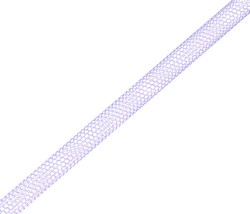Carbon nanotubes strengthen metal joints
Within the framework of the SAFEJOINT(opens in new window) (Enhancing structural efficiency through novel dissimilar material joining techniques) project, researchers improved joint formation with the introduction of multi-walled carbon nanotubes (MWCNTs). The issue of non-destructive inspection (NDI) of bonded joints was also addressed. The SAFEJOINT team explored different ways to introduce MWCNTs into the bond line of the joint between the metal and polymer composite. Among these techniques, electrophoretic deposition (EPD), taking advantage of the electrical conductivity of MWCNTs, proved suitable for attachment to the fibre reinforcement network. Dispersion of the nanotubes in adhesive resins demonstrated a sort of catalytic effect with some resins such that curing times could be significantly reduced. Researchers determined the optimal MWCNT-resin combination to enhance the fracture toughness for each of these resins. Next, the focus of SAFEJOINT was set on friction stir welding. This solid-state technique for joining dissimilar metals relies on the heat produced by the friction between a rotating tool and one of the metals, rather than an external heat source. The second metal is joined to it using mechanical pressure. Researchers experimented with aluminium alloys as base metals. Carbon nanotubes were used as reinforcing fillers in the stir zone to create joints with enhanced mechanical properties, such as fatigue strength. Hybrid organic-inorganic coatings were also introduced to produce dissimilar joints with improved corrosion properties. Lastly, new NDI technology was developed and tested on both metal-to-metal and metal-to-composite joints. For pulse-echo inspections using focused transducers, new signal processing techniques were implemented to eliminate the influence of their complex geometries in the signal recorded. SAFEJOINT bonding technologies open the way to widespread use of dissimilar material joints in high-performance lightweight structures for the transport sector to reduce fuel consumption and associated emissions. This will benefit both industry and the environment.



